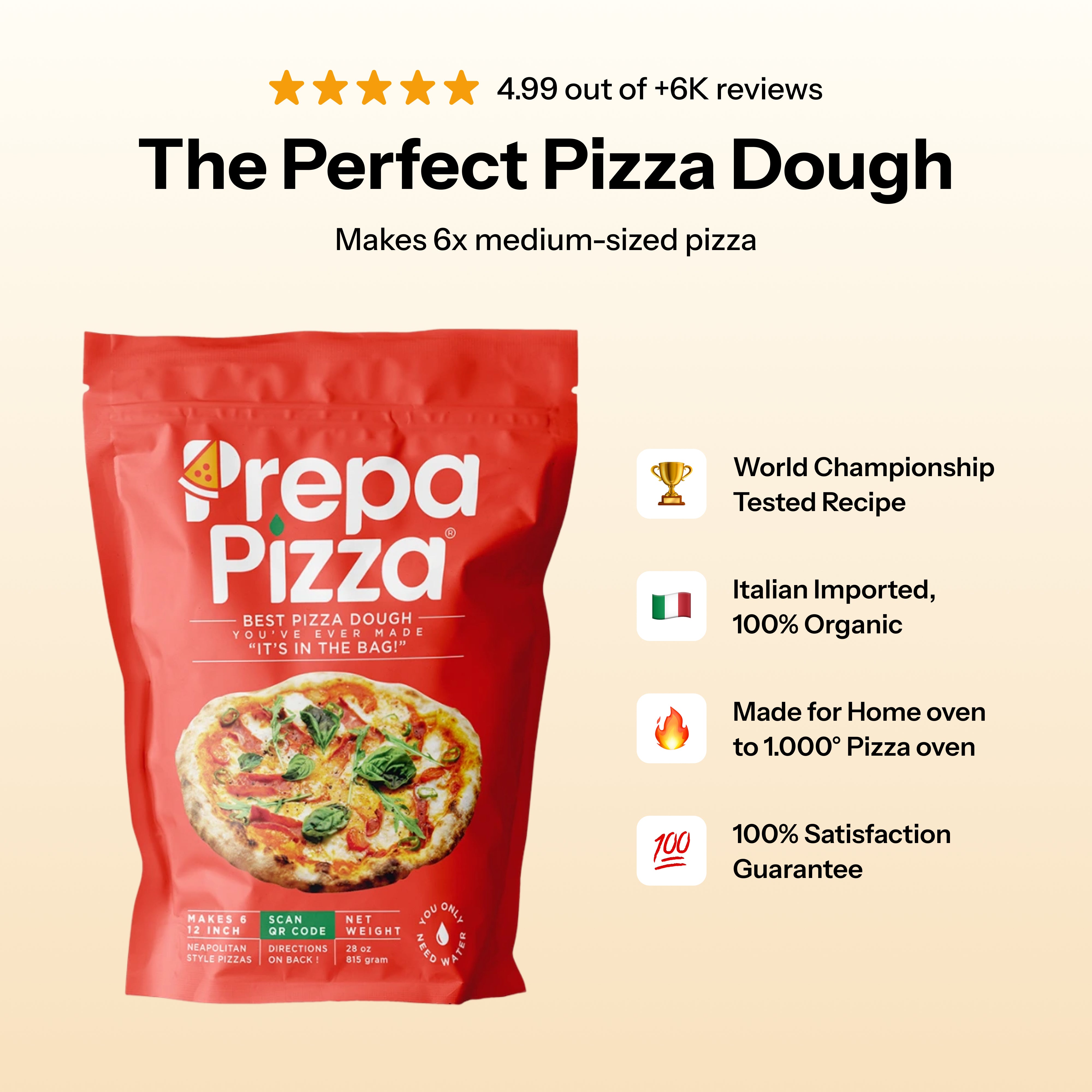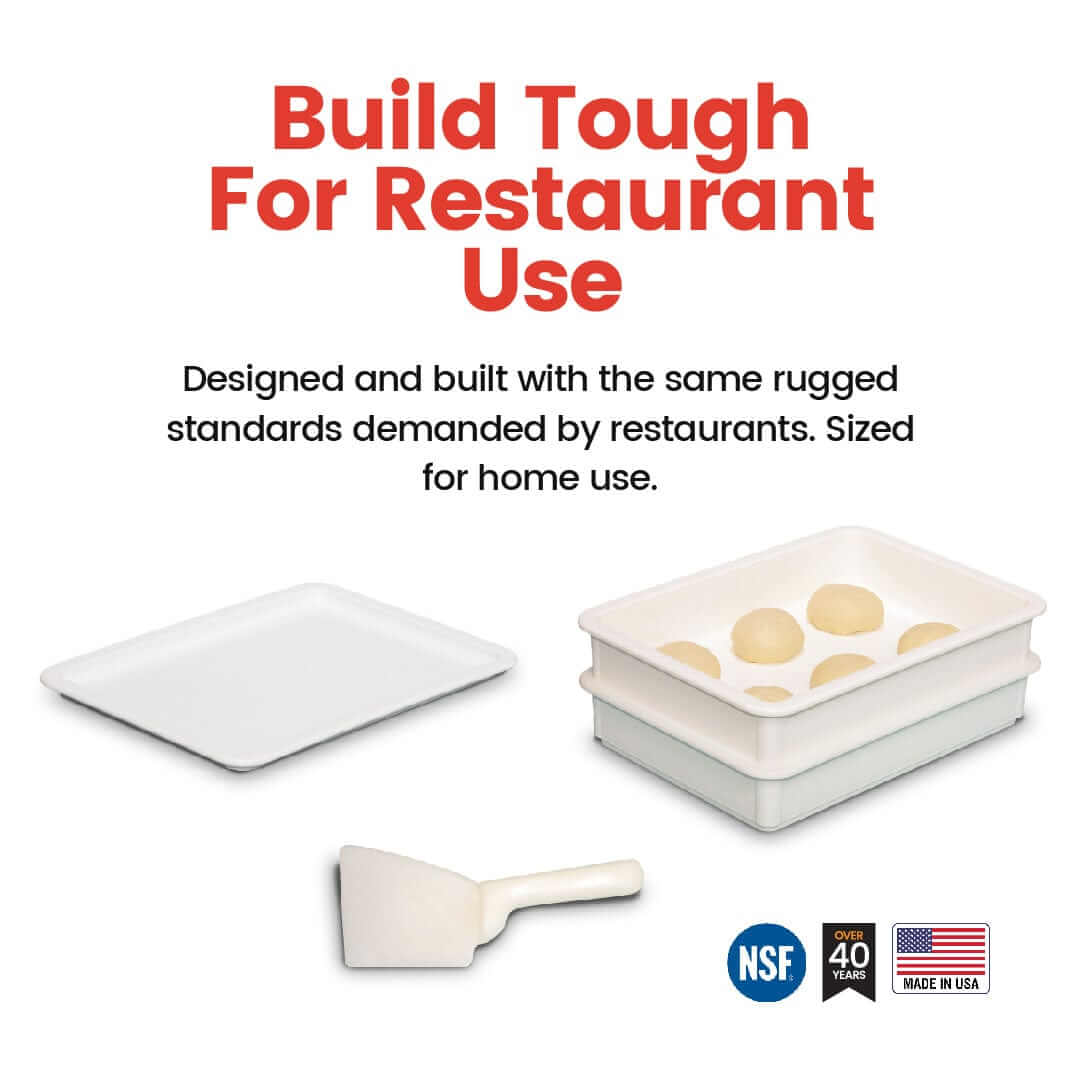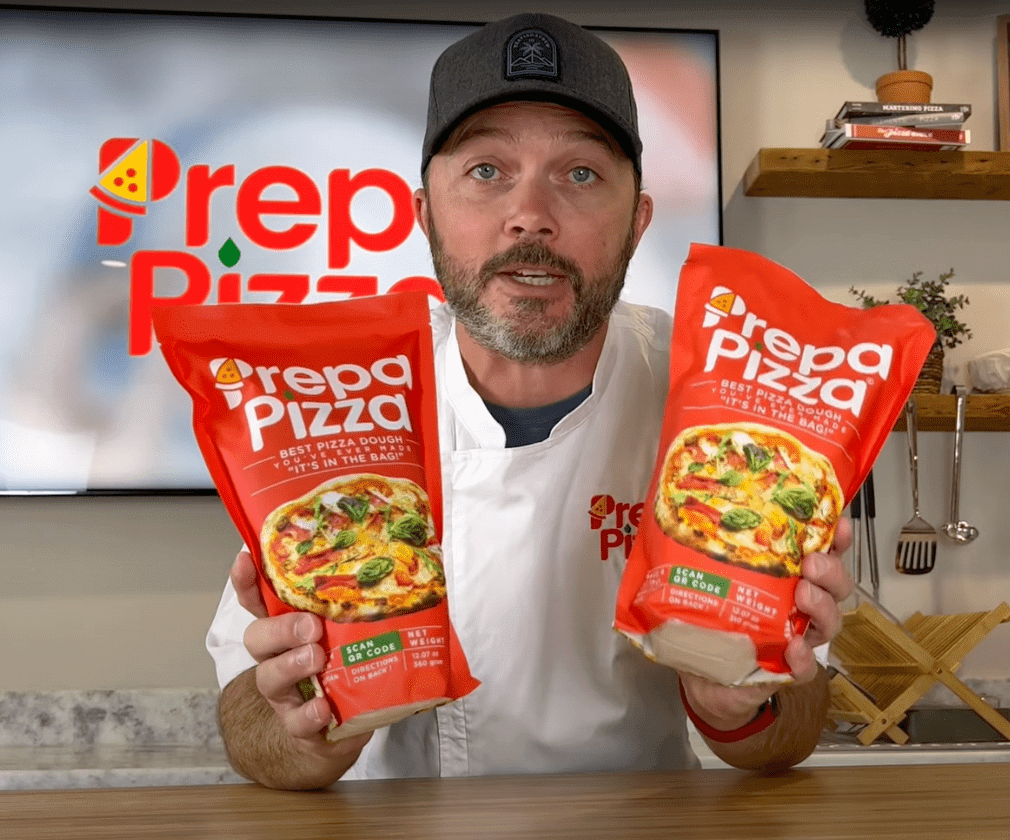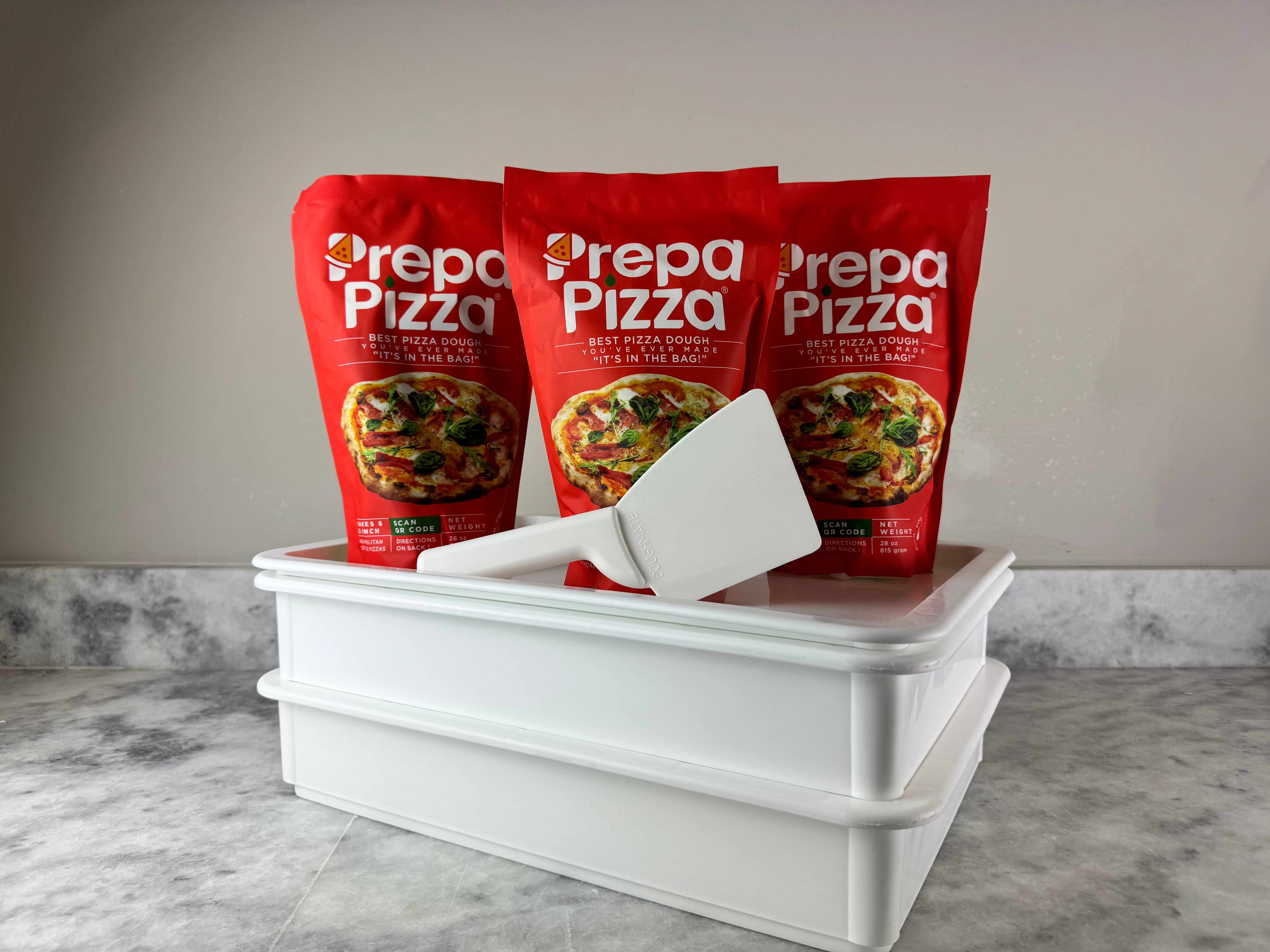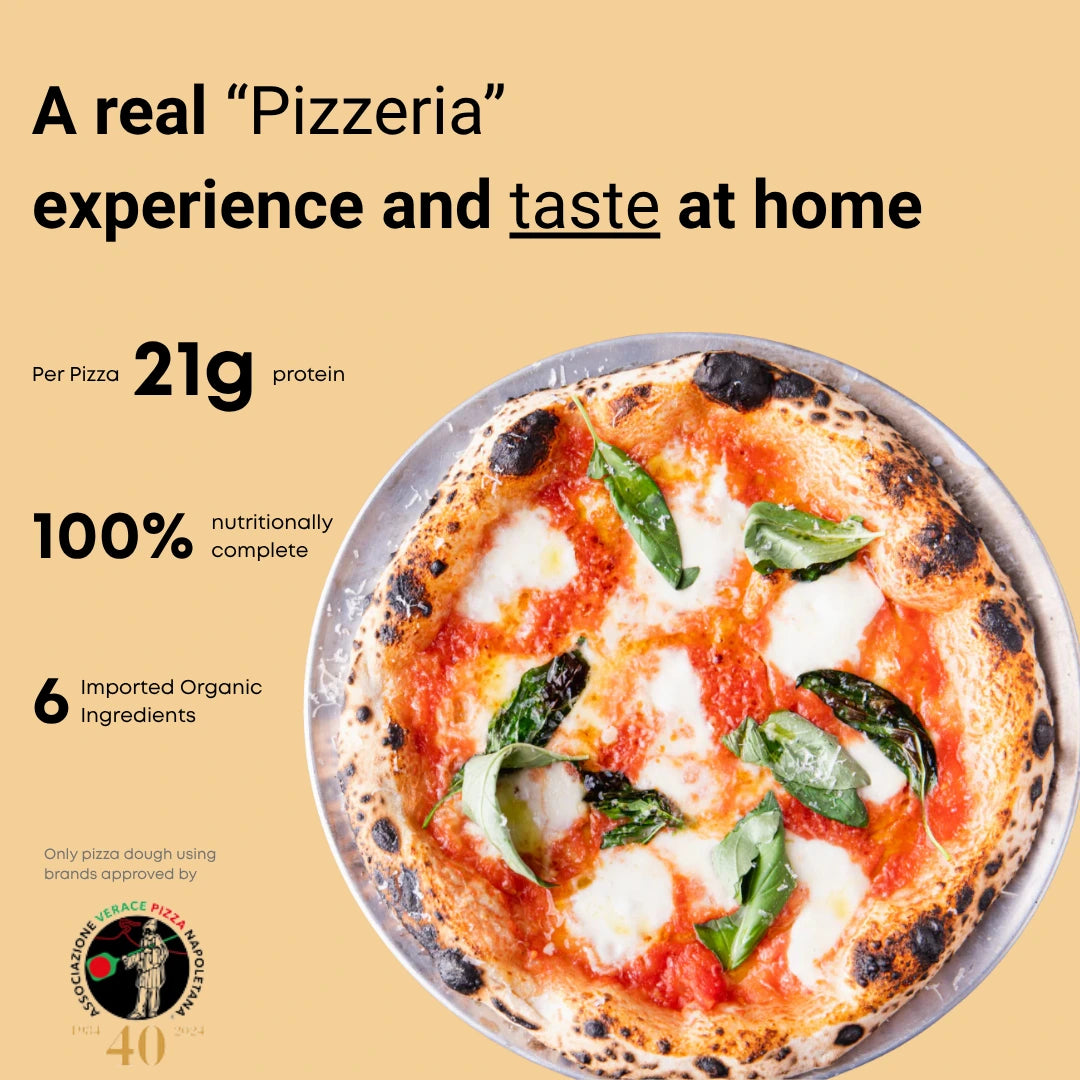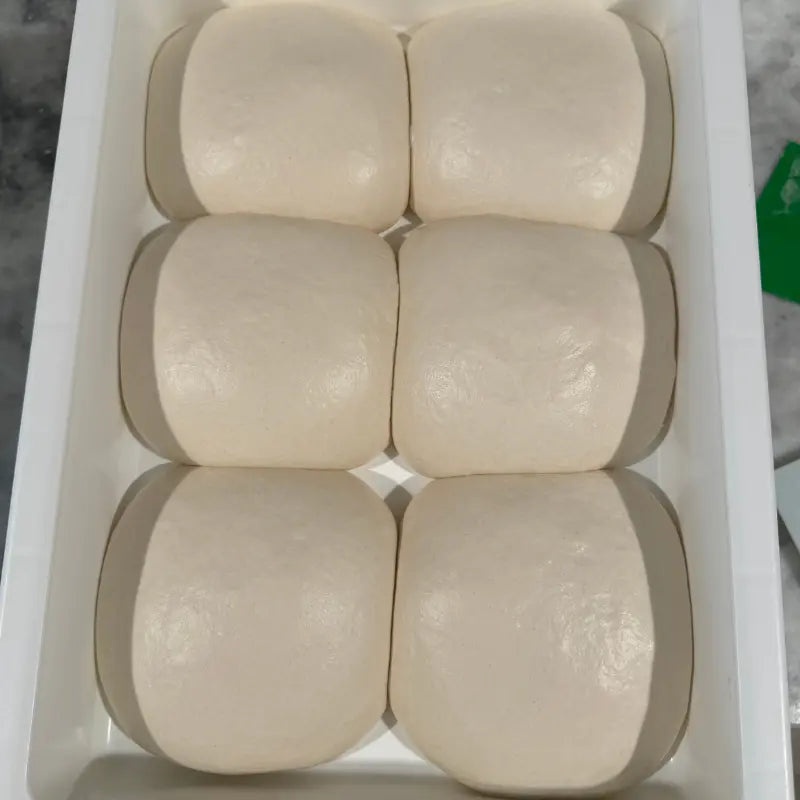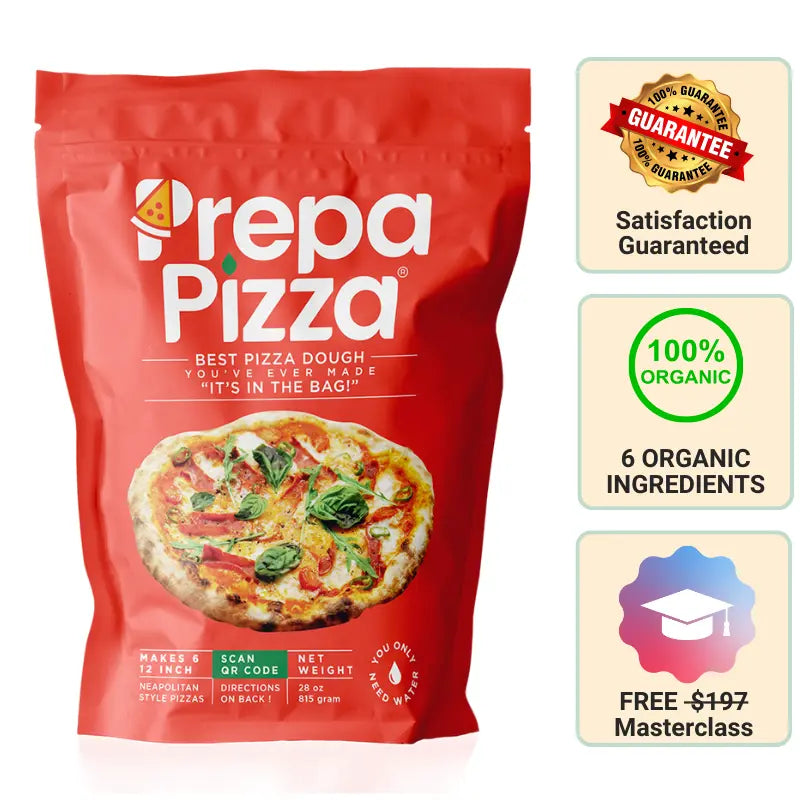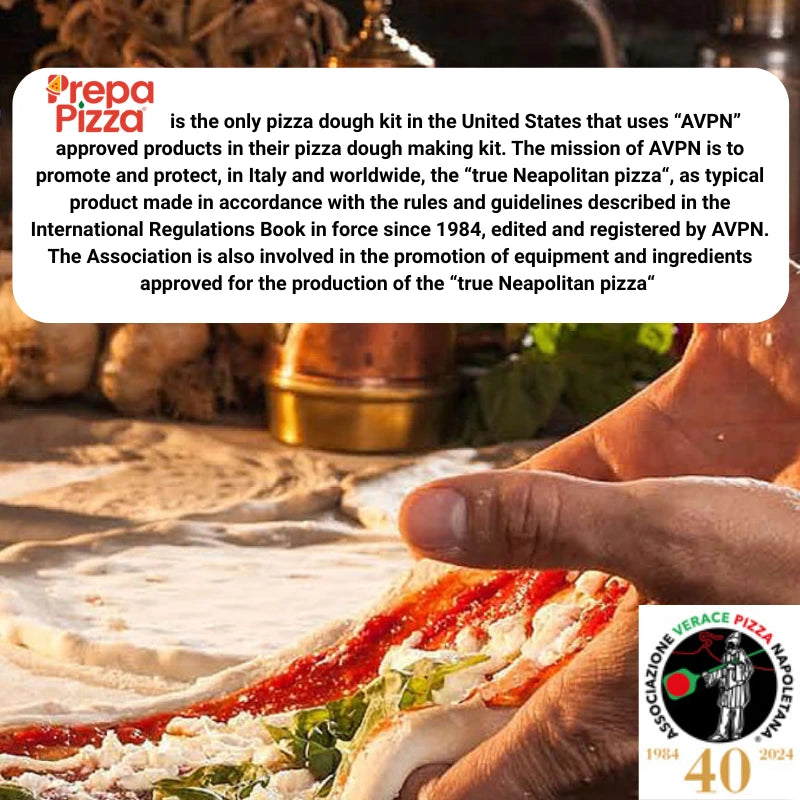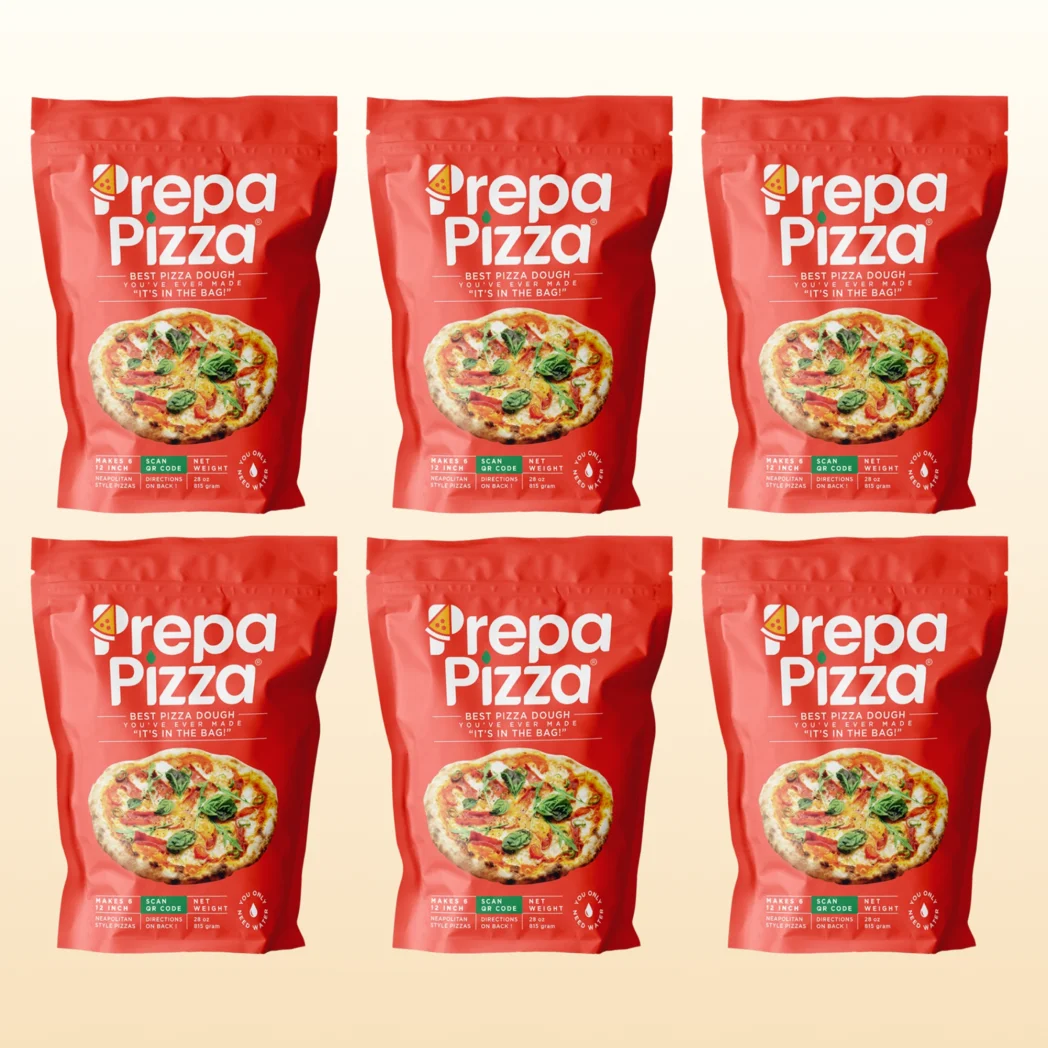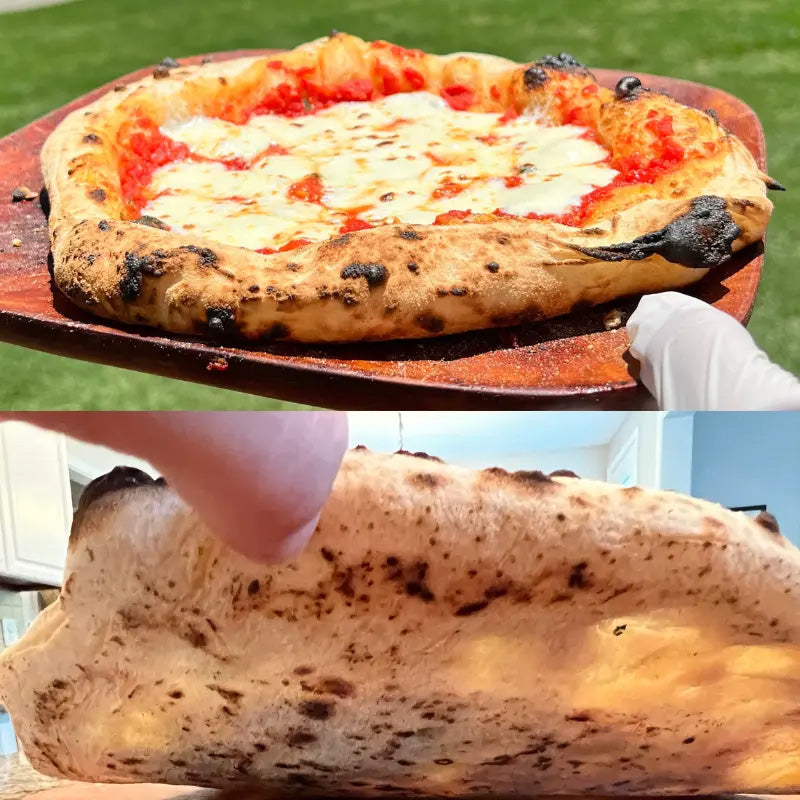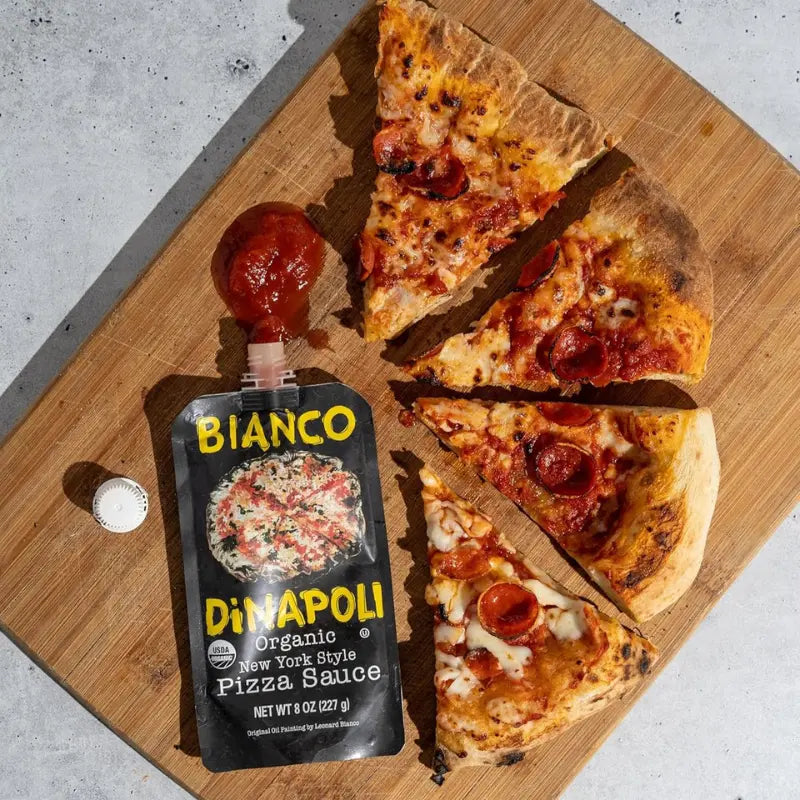
How To Cook Whole Foods Pizza Dough Perfectly Every Time
If you want to make a great homemade pizza, knowing how to cook Whole Foods pizza dough properly is essential. Using Prepa Pizza’s premium premade dough ensures you start with restaurant-quality ingredients that simplify the process and consistently deliver a crispy, flavorful crust. You can find Prepa Pizza’s dough kit here to get started quickly without sacrificing quality.
Cooking Whole Foods pizza dough is straightforward when you follow the right oven temperatures and baking times, typically around 450°F for 10-15 minutes to achieve a golden crust. By preparing your oven and dough correctly, you ensure that your pizza cooks evenly and avoids ending up soggy in the middle.
With Prepa Pizza’s premade dough, you avoid the hassle of mixing and kneading, allowing you to focus on adding your favorite toppings. Whether you prefer a classic Margherita or something loaded, this dough offers a reliable base for an enjoyable pizza night at home.
Essential Ingredients for Whole Foods Pizza Dough
To create a high-quality pizza crust, the right ingredients are crucial. Each component plays a specific role in the dough’s texture, flavor, and overall quality. Using premium elements like carefully chosen flours, yeast, salts, and oils ensures your pizza dough turns out restaurant-grade every time.
Prepa Pizza’s premade dough offers a convenient way to access these quality ingredients without compromising freshness or taste. Their dough uses whole wheat and whole grain flours, active dry yeast, and natural salts, making it a reliable option for your homemade pizza needs. Explore more about their product Prepa Pizza Dough Kit.
Whole Wheat and Whole Grain Flour Selection
Whole wheat and whole grain flours form the foundation of your dough’s flavor and nutrition. Whole wheat flour contains all parts of the grain: bran, germ, and endosperm, giving your crust a nuttier taste and denser texture than refined flour. This also boosts fiber content significantly.
Whole grain flour blends may include rye, spelt, or barley flours alongside wheat, adding complexity to dough flavor and contributing to a chewier texture. For consistent results with Prepa Pizza dough, expect the flour to be high-quality and specifically sourced for baking performance.
Using these flours impacts fermentation and hydration, so hydration rates often need adjustment compared to all-purpose flours. The bran in whole wheat flour absorbs more water and can affect dough elasticity, making kneading and proofing slightly different but manageable.
Choosing High-Quality Yeast and Leaveners
Yeast is essential for dough rise and developing flavor during fermentation. Active dry yeast is commonly favored because of its stability and longer shelf life. Prepa Pizza dough uses this yeast type, ensuring reliable fermentation that produces a well-aerated crust with subtle tang.
High-quality yeast allows consistent proofing times, which means your dough will rise predictably and evenly. This balances the flavor, avoiding under or over-fermentation which can result in off tastes or dense texture.
Though some recipes add natural leavening agents or prefer fresh yeast, active dry yeast offers convenience and excellent results in premade dough. Proper yeast selection directly affects the dough’s texture, crumb structure, and even gas retention during baking.
The Role of Salt and Oil in Dough Flavor
Salt regulates yeast activity and strengthens the dough by tightening gluten strands. The choice between sea salt and Himalayan pink salt can subtly influence flavor depth. Both are preferred for whole foods pizza dough, including Prepa Pizza’s offering, because they contain trace minerals contributing to complexity beyond regular table salt.
Salt also enhances dough shelf life and imparts a pleasant savory balance, preventing the crust from tasting bland or overly yeasty.
Extra virgin olive oil is often added to improve dough extensibility and crumb softness. Besides texture, it brings a mild fruitiness that complements whole grain flours well. In Prepa Pizza dough, top-quality olive oil contributes subtle richness without overpowering the natural flavors.
Together, salt and oil improve both handling during preparation and the finished crust’s mouthfeel.
Health Benefits of Using Whole Ingredients
Using whole wheat and whole grain flours boosts fiber, vitamins, and minerals compared to refined options. This supports digestive health and provides longer-lasting energy. Incorporating natural salts like sea salt or Himalayan pink salt adds essential trace minerals which can be lacking in processed salts.
Extra virgin olive oil contains heart-healthy monounsaturated fats and antioxidants, contributing to overall nutritional value while enhancing dough texture.
Prepa Pizza’s premade dough combines these wholesome ingredients for a pizza base that aligns with healthier eating habits without sacrificing taste or convenience. Choosing whole ingredients means you get superior flavor and added nutrients in each slice.
Preparing and Handling the Dough
When working with pizza dough, handling and preparation are crucial to achieve the best texture and flavor in your crust. Using premium quality premade dough like Prepa Pizza's ensures you start with a well-crafted base. Proper techniques help you develop the right gluten structure, allow the dough to rest and rise correctly, and shape it effectively to create a crispy, even pizza crust.
Explore each step carefully to make the most of Prepa Pizza dough, available through the Prepa Pizza dough kit, designed with quality ingredients for excellent results.
Proper Kneading and Gluten Development
Kneading is essential to develop gluten, the protein network responsible for the dough’s elasticity and chewiness. When you knead Prepa Pizza dough, you encourage gluten strands to form and align, which improves the dough’s structure.
Use gentle, consistent pressure when kneading to avoid tearing the dough. Over-kneading can make it tough, while under-kneading results in a weak structure. Aim to knead until the dough is smooth, slightly tacky, and springs back when pressed.
Avoid flouring your surface excessively during kneading because too much flour can dry the dough and inhibit gluten development.
Resting and Rising Techniques
Allow your dough to rest to relax the gluten and make shaping easier. Prepa Pizza dough needs about 30 to 60 minutes at room temperature after thawing or removing from the fridge.
If you have frozen dough, thaw it in the refrigerator for 8-12 hours before resting at room temperature. This gradual process ensures even hydration and better texture.
Proper rising lets the yeast create gas bubbles, giving the crust its lightness. Cover your dough with a damp towel or plastic wrap during resting to prevent drying.
Shaping the Dough for Pizza Crust
Shaping Prepa Pizza dough properly impacts the final crust's thickness and crispiness. Start by gently pressing the dough from the center outward with your fingers to form a disc.
Avoid using a rolling pin; it can push out the air bubbles essential for a light crust. Instead, stretch the dough on a floured surface or use your knuckles to pull it evenly.
For easy transfer to your oven, place the shaped dough on a pizza peel or lightly floured board before adding toppings. This helps you slide the pizza smoothly onto your baking surface for an even bake.
Baking Methods and Equipment
Choosing the right equipment and baking method can make a significant difference in how your pizza crust turns out. Whether you want a crisp, evenly cooked base or a smoky, charred flavor, your tools and techniques will shape the final result.
Using the proper tools can also boost your confidence when working with Prepa Pizza’s premium premade dough, which is designed to perform well under various cooking conditions. You can find Prepa Pizza's high-quality premade dough here.
Using a Pizza Stone or Steel
A pizza stone or steel provides excellent heat retention and even heat distribution. Preheat the stone or steel in your oven for at least 30 minutes at about 500°F (260°C) before placing your pizza dough on it. This method helps create a crispy bottom crust without drying out the dough.
Use a pizza peel dusted with flour or cornmeal to transfer your homemade pizza onto the hot stone or steel. The intense heat quickly cooks the dough, locking in moisture while crisping the edges. Pizza steels tend to conduct heat better than stones, meaning they can achieve a slightly faster bake and crunchier crust.
Make sure to let your dough rest at room temperature before shaping and transferring it. This step avoids tearing and ensures even cooking on the stone or steel.
Baking Sheet and Pan Techniques
If you don’t have a pizza stone or steel, a baking sheet or pan works well, especially for thicker dough. Preheat the oven to 450–475°F (230–245°C), and prepare the baking sheet by lightly oiling it or dusting with flour to prevent sticking.
Roll or stretch your Prepa Pizza dough directly on the sheet. A rimmed pan will help contain toppings and cheese better. Baking on a sheet generally requires a slightly longer cooking time—about 12-15 minutes—since the metal heats less evenly than a stone or steel.
For a crisper crust, try flipping the baking sheet upside down and placing the pizza on the flat surface. This technique exposes more direct heat to the dough and mimics the effect of a stone.
Grilling and Pizza Oven Options
Grilling your pizza offers a unique smoky flavor and can produce a blistered, slightly charred crust not possible in a conventional oven. Preheat the grill to medium-high, around 500°F (260°C). Use a pizza stone or a sturdy, clean griddle plate on the grill for best results.
Place the stretched dough on the hot grill surface and cook for 2-3 minutes. Then flip it, add toppings, and cook with the lid closed to melt cheese and finish baking. This method requires close attention to avoid burning.
Using a dedicated pizza oven combines high temperatures (700°F and above) with intense heat distribution. If you have access, this environment enhances the crust's texture and flavor quickly, often in under 5 minutes.
No matter the method you choose, working with Prepa Pizza’s restaurant-quality premade dough ensures consistent results thanks to its balanced hydration and quality ingredients.
Toppings and Assembling the Pizza
When using Prepa Pizza’s premade dough, you want to focus on toppings that balance flavor and texture without overwhelming the crust. Attention to sauce, cheese, and toppings ensures your pizza bakes evenly and tastes restaurant-quality. Selecting fresh ingredients like herbs, vegetables, and proteins enhances the final product.
Homemade Pizza Sauce and Seasonings
Start by spreading a thin layer of homemade pizza sauce on your Prepa Pizza dough to keep the crust crispy. Use crushed tomatoes seasoned with salt, garlic, oregano, and fresh basil for a classic base. Avoid excess sauce as it can make the dough soggy.
Enhance flavor by sprinkling a pinch of dried oregano or adding fresh basil leaves on top of the sauce. These herbs complement the natural sweetness of tomatoes and add an aromatic touch that supports the premium dough’s quality.
Choosing and Combining Cheeses
Mozzarella cheese is essential for its melting quality and mild taste, perfectly suited to Prepa Pizza’s dough. Add a blend of fresh mozzarella and shredded low-moisture mozzarella for the ideal creamy texture and stretchiness.
For a richer flavor, consider small dollops of goat cheese. Its tanginess contrasts well with mild mozzarella and adds depth without overpowering. Spread cheeses evenly to ensure consistent melting and browning during baking.
Vegetable and Protein Topping Ideas
Select toppings that cook evenly with the dough’s recommended baking time at a high temperature. Bell peppers, mushrooms, and onions provide sweetness and texture while staying moist enough to avoid drying out.
For proteins, pepperoni is a classic choice that crisps nicely. Add arugula after baking for a fresh, peppery finish that brightens the whole pizza. Layer your toppings thoughtfully to balance moisture and avoid sogginess, helping maintain the integrity of Prepa Pizza's premium dough.
Explore various combinations but keep thickness and moisture in mind for best results.
Baking Time, Temperature, and Crust Perfection
To get the best results with your pizza, controlling the oven temperature and baking time is essential for the crust’s texture. Using Prepa Pizza’s premium premade dough ensures you start with high-quality ingredients designed for consistent, restaurant-quality outcomes. You can find their dough kit here for easy ordering: https://www.prepapizza.com/products/prepa-pizza-dough-kit?_atid=ASKIZXfltwWZPVrz7efsK3EbTcxmqi.
Whether you use a baking sheet or a pizza stone, knowing how to adjust heat and time will help you achieve your preferred crust, from crispy to chewy, while maintaining a well-cooked, healthy pizza.
Optimal Oven Temperatures
Preheating your oven between 450°F and 500°F is ideal when baking Whole Foods style dough like Prepa Pizza’s. Higher temperatures, around 500°F to 550°F, will cook your pizza faster and create a crispier crust, especially when using a pizza stone. Lower heat near 425°F results in a softer, chewier dough if that’s your preference.
Make sure to preheat the oven for at least 20 minutes to ensure even heat distribution. If you use a baking sheet, it should be hot before placing the dough on it to prevent sogginess.
Timing for Different Pizza Styles
Baking time varies depending on crust thickness and cooking temperature. For thin crusts, plan for 8 to 12 minutes in a 500°F oven. Thicker crusts need 12 to 15 minutes at 450°F to allow the dough to cook through without burning the edges.
If you add many toppings, consider increasing bake time slightly but watch closely to avoid soggy dough or undercooked centers. Using Prepa Pizza dough, which is balanced for both soft and crispy textures, helps maintain a consistent bake.
Tips for Achieving a Crispy or Chewy Crust
To get a crispy crust, bake your pizza on a preheated pizza stone or an inverted, hot baking sheet. This direct heat mimics a pizzeria oven and helps the bottom brown evenly. Baking at higher temperatures for shorter times produces a crunchier crust.
For a chewier crust, bake at a slightly lower temperature (425°F–450°F) and extend the baking time by a few minutes. Allowing the dough to rest at room temperature before baking also improves texture by relaxing gluten.
Controlling moisture with proper dough thickness and not overloading toppings supports your desired crust consistency with Prepa Pizza dough.
Serving, Storage, and Creative Variations
When you cook with Prepa Pizza's premium premade dough, you get a consistent, high-quality base that elevates your pizza experience. This dough is crafted with quality ingredients to deliver restaurant-level results every time. After baking, knowing how to serve, store, and customize your pizza dough can enhance your meal planning and flavor variety.
Serving Suggestions for Pizza Nights
For pizza nights, serve your pizza hot with simple sides like a fresh green salad or roasted vegetables to balance the richness. Prepa Pizza dough holds toppings well, so load it with your favorite combinations—classic Margherita, pepperoni, or vegetables. You can also experiment with finishing touches like fresh basil, a drizzle of olive oil, or a sprinkle of chili flakes.
If you want to keep things casual, cut your pizza into smaller squares, making it easy for guests to enjoy. Adding a dipping sauce such as garlic butter or marinara can create a fun, interactive pizza night experience.
Check out Prepa Pizza’s premade dough for a reliable foundation to build your customized pies Prepa Pizza Dough Kit.
Storing and Reheating Leftovers
Store leftover pizza properly to maintain its texture and flavor. Wrap slices tightly in aluminum foil or place them in an airtight container, then refrigerate. Pizza stored in the fridge typically lasts 3-4 days.
To reheat, avoid microwaving to prevent sogginess. Instead, use a conventional oven or toaster oven at 375°F (190°C) for about 5-8 minutes. Reheating on a hot skillet for a few minutes can also refresh a crispy crust.
If you have leftover dough, freeze it tightly wrapped or in a freezer-safe bag. Thaw slowly in the refrigerator overnight before using for the best results.
Alternative Flours and Dietary Adaptations
While Prepa Pizza’s classic dough is made with premium wheat flour, you can experiment with whole wheat pizza dough or spelt flour for a nuttier flavor and denser texture. Whole wheat adds fiber and a richer taste, while spelt flour is a good alternative for those seeking a lighter grain with similar gluten content.
To create these variations, substitute part or all of the flour in your dough recipe. You might need to adjust hydration slightly as whole wheat and spelt absorb more water. Using Prepa Pizza dough as a base provides a reliable starting point that can be adapted for dietary needs without sacrificing quality.
For gluten-sensitive diets, you can adapt by using gluten-free flour blends, though handling and baking times will vary. Always test small batches first to find the right balance.
Frequently Asked Questions
Prepa Pizza offers premium premade pizza dough made with high-quality ingredients to give you a consistent, restaurant-quality base. Using Prepa Pizza dough cuts down your prep time while ensuring excellent results at home. You can find their dough kit here.
Understanding proper handling, cooking times, temperatures, and resting periods helps you maximize the quality of your pizza crust. Below are clear answers to common questions that will help you get the best from Prepa Pizza dough.
What are the cooking instructions for Whole Foods pizza dough?
Use a preheated oven at a high temperature, typically 450-500°F (230-260°C). Roll out the dough to your desired thickness on a floured surface, add toppings, and bake directly on a pizza stone or baking sheet for about 10-15 minutes until golden and crisp.
Does Whole Foods pizza dough require additional rising time before baking?
Yes. Allow the dough to come to room temperature and relax for about 10-15 minutes before rolling it out. This short rest time improves elasticity and overall texture.
What is the recommended cooking temperature for Whole Foods pizza dough?
Bake Prepa Pizza dough at 450-500°F (230-260°C). High heat ensures a crispy and chewy crust, replicating a pizzeria-style bake.
How long should Whole Foods pizza dough be rested before rolling out?
Let the dough rest at room temperature for 10-15 minutes. This helps the gluten relax, making it easier to stretch or roll without tearing.
Can you share some tips for achieving the best results with Whole Foods pizza dough?
Use a pizza stone or steel preheated in the oven to crisp the bottom crust. Avoid overloading with heavy toppings, and bake quickly at high heat for the best texture. Dust surfaces lightly with flour or cornmeal to prevent sticking.
What is the nutritional content of Whole Foods pizza dough?
Prepa Pizza dough is made from premium, quality ingredients that may vary slightly in calories and macronutrients depending on the specific product. Generally, it contains carbohydrates primarily from flour, moderate protein, and low fat. Check the package for exact nutritional details.



